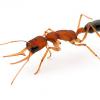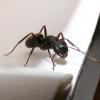I researched the heck out of this because it's been a goal of mine too.
In short, a mature colony will raise alates, which will overwinter with the colony. On the first warm day after a rainstorm (usually), alates will start their mating flights depending on species: some in the morning, some at sunset, some at night. At least in Camponotus, the males fly first at sunset, and the females are triggered to fly when they detect the male pheromones. There is speculation that ants are sensitive to barometric pressure, in addition to humidity. To be successful with an indoor mating flight, it might actually have to be rainy outside as well humid in their habitats. To say nothing of stable indoor day/night photoperiod to synchronize everything.
Last, the females need to smell the males, in the species where the men fly first.
But yeah, all that said, I don't know if I've heard of success in this. Researchers seem pretty convinced that the mating must occur in the air (for Camponotus), because it's part of mate fitness selection. I *think* if they can't fly freely, they just might not mate at all
Edited by CampoKing, December 20 2019 - 7:22 PM.


















